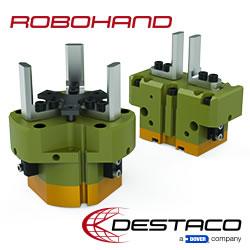Connected Warehouses Becoming the Norm to Support Fulfillment Requirements Across Multiple Channels, According to New VDC Research Report
Automation investments will enable end users supply chains to be nimble; present real-time data, analytics, and intelligence; and build a customer-centric experience.
Organizations today are facing a growing number of market pressures - faster order fulfillment, error costs, lack of space, and increasing labor costs - to optimize their warehouse, according to a new report by VDC Research (click here for more info). These pressures are increasing the demand for automated solutions in the warehouse. Warehouses and distribution centers are increasingly playing a critical role in generating supply chain efficiencies across industries like pharmaceuticals, food and beverage, retail, and fashion, leading to companies looking for new ways to support their growing warehouse operations. As warehouses become more critical to supply chain management and distribution, material handling, data capture, mobile devices, wearables, and software technologies are evolving to align with organizations vision of the warehouse of the future focusing on visibility, automation, and analytics.
The number of private warehouse establishments in the US alone has raised to 16,556 in 2015 and with it a growing labor force. With employees are having to do more as well as benchmark logistics costs for companies in 2014 increasing to 9.3% of revenues, decision-makers are constantly looking for new ways to reduce their expenses overall while addressing the changing needs of the market and consumer.
Consumers access to non-traditional retail channels, including online shopping (both desktop and mobile), and the click-and-collect model, has transformed logistics, perhaps forever. Organizations today need to handle an increasing number of SKUs, and carry out accurate order fulfillment faster than ever before. According to insights from VDCs survey of warehouse and logistics segments, more than 90% of businesses surveyed feel moderate to substantial levels of pressure of customers demanding to see their orders fulfilled faster and 77% of survey respondents cited growing labor costs as a major challenge. The advancement of data collection and automation solutions as well as analytics will take on a larger role in the warehouse of the future. As such, there is also a growing need to develop software solutions such as advanced management control systems and analytics modules that can communicate with each other and operate as unified systems instead of separate data silos.
"Warehouse operators face growing external pressures and it will become increasingly important for them to evaluate technology options in support of building smart or connected warehouses" said VDCs Shahroze Husain. "It will be imperative for hardware vendors and solution providers to help end users make optimal use of all the data available to them to achieve significant operational efficiencies."
VDCs primary research indicates decision-makers for warehouse automation-related investments tend to be fairly conservative, taking anywhere from three to seven years to make their technology purchase and deployment decisions. This is largely due to the fact that such decisions are typically made with long-term objectives in mind. The increased demand for warehouse automation today is primarily to support the changing requirements driven by high volumes of small, individual orders for e-commerce creating demand across material handling types including ASRS, shuttles, AGVs, conveyors, sortation systems, and robotics, as well as order fulfillment technologies such as mobile devices and wearables. In order to efficiently manage their investments in this diverse set of solutions, end-user organizations need to proactively conduct cost-benefit analysis so as to not spread their resources too thin.
About VDC Research
Founded in 1971, VDC Research provides in-depth insights to technology vendors, end users, and investors across the globe. As a market research and consulting firm, VDCs coverage of AutoID, enterprise mobility, industrial automation, and IoT and embedded technologies is among the most advanced in the industry, helping our clients make critical decisions with confidence. Offering syndicated reports and custom consultation, our methodologies consistently provide accurate forecasts and unmatched thought leadership for deeply technical markets. Located in Natick, Massachusetts, VDC prides itself on its close personal relationships with clients, delivering an attention to detail and a unique perspective that is second to none.
Featured Product

